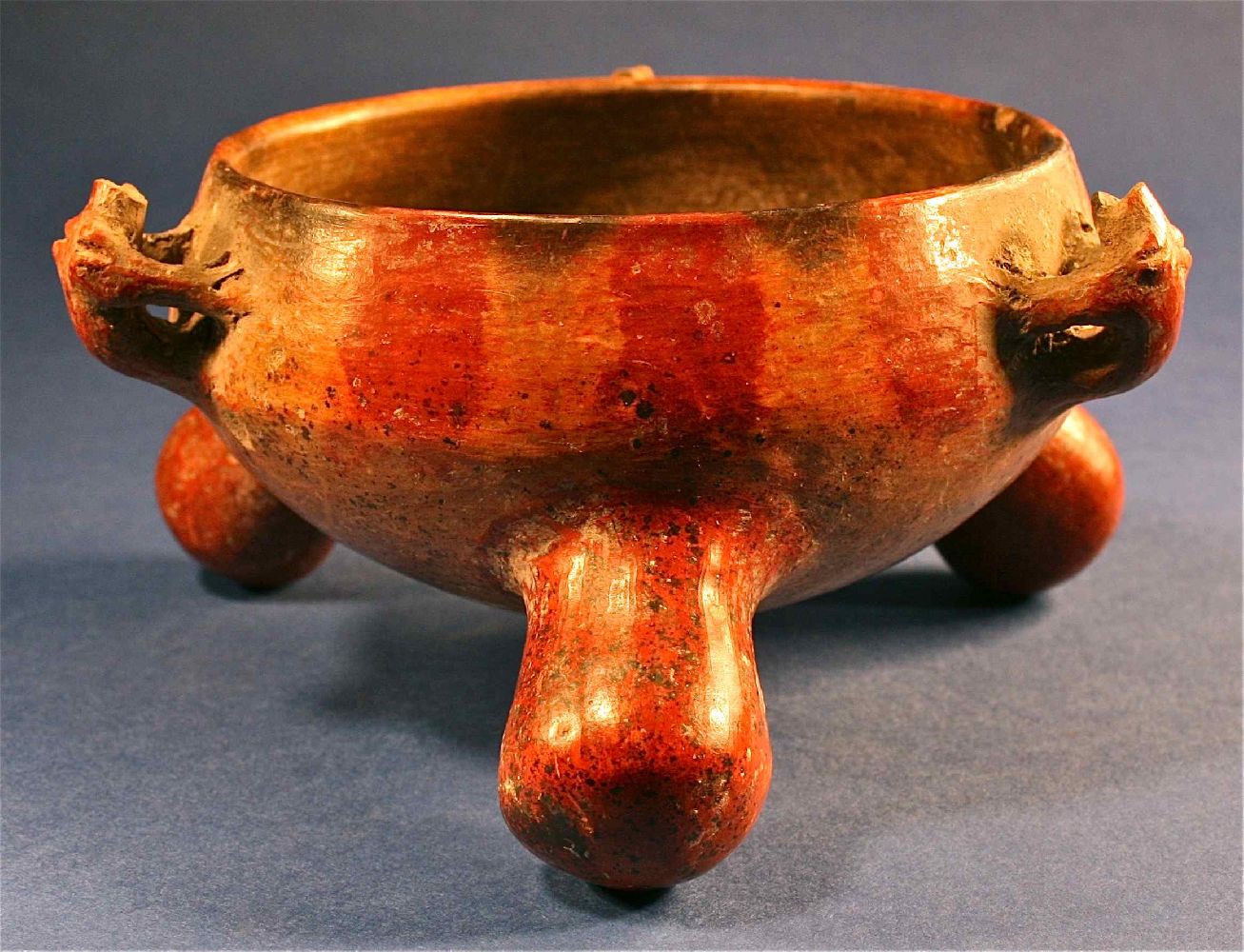

Title: Mexican Decorated Painted Folk Art Ancient Ceramic Pottery Bowl
Shipping: $25.00
Artist: N/A
Period: Unassigned
History: N/A
Origin: North America > United States
Condition: Museum Quality
Item Date: Artifact
Item ID: 5584
Fantastic three-footed bowl with a wonderful original old surface! This bowl boasts a beautiful patina and great form. Although it has old cracks and worn edges, it is still intact. This would make a great addition to any Mexican folk art collection. This vintage handmade folk art bowl is in very nice condition, despite some cracks and chips. It has a great age to it and the paint is in amazing condition! It's a great find and would be perfect for any antique Mexican bowl collector. Ceramics and pottery have been a part of Mexican culture for thousands of years, dating back to the Pre-Columbian period. During this time, ceramic arts and pottery crafts developed with the first advanced civilizations and cultures of Mesoamerica. With one exception, pre-Hispanic wares were not glazed but rather burnished and painted with colored fine clay slips. The potter's wheel was also unknown, and pieces were shaped by molding, coiling, and other methods. At Busacca Gallery, we are committed to enhancing our customers' lives by discovering, creating, and highlighting only the best art we can find in the world today. We are taste-makers, art advisers, and consultants.
Mexican Native American ceramics are a vital part of the cultural history of Central America and its native people. The ancient pottery of Mexico dates back thousands of years and has been a vital means of artistic expression and cultural identity for various indigenous communities. The earliest pottery in Mexico was produced during the Pre-Columbian era, a period of time before the arrival of the Spanish in the 16th century. During this time, ceramic arts and pottery crafts flourished among various indigenous groups, including the Olmec, Maya, and Aztec. The pottery of these early civilizations was often used for practical purposes, such as cooking, storage, and ritualistic activities. These early ceramics were often decorated with intricate designs that reflected the culture and beliefs of the people who made them. One of the most famous examples of ancient Mexican pottery is the figurines of the Colima culture, which date back to around 300 BC to 300 AD. These figurines depict everyday life, including musicians, dancers, and animals, and were often placed in tombs as offerings for the deceased. The Mayan civilization also produced a wide variety of pottery, including painted vases and urns, figurines, and incense burners. Many of these pieces were decorated with intricate designs and hieroglyphics, which provided insight into the beliefs and culture of the Maya. The Aztecs, who flourished during the 14th to 16th centuries, were known for their skill in pottery making. Aztec ceramics were often highly decorative, featuring intricate designs and patterns. They were used for a variety of purposes, including serving and storing food, and were often used in religious ceremonies. Today, Mexican Native American ceramics continue to be a vital means of artistic expression and cultural identity for many indigenous communities. Traditional techniques are still used to produce pottery, and many artists continue to create beautiful and unique pieces that reflect the rich cultural heritage of Mexico and its native people.
Mexican handcrafts and folk art is a complex collection of items made with various materials and intended for utilitarian, decorative or other purposes. Some of the items produced by hand in this country include ceramics, wall hangings, vases, furniture, textiles and much more. In Mexico, both crafts created for utilitarian purposes and folk art are collectively known as “artesanía” as both have a similar history and both are a valued part of Mexico’s national identity. Mexico’s artesanía tradition is a blend of indigenous and European techniques and designs. This blending, called “mestizo” was particularly emphasized by Mexico’s political, intellectual and artistic elite in the early 20th century after the Mexican Revolution toppled Porfirio Díaz’s French-style and modernization-focused presidency.